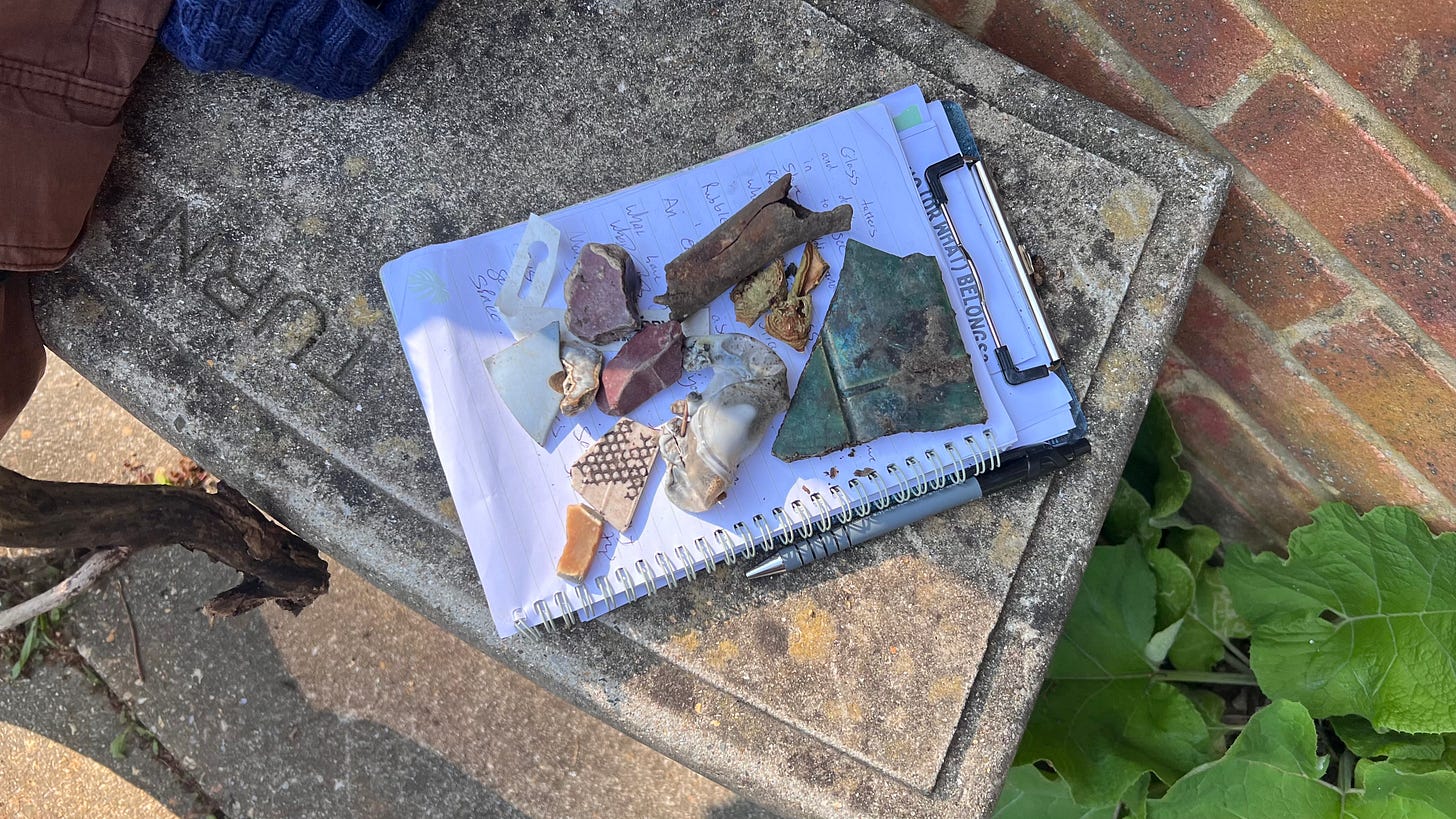At the end of April, I had the opportunity to host a walkshop. Part of my doctoral research, it followed on from a series of sessions I offered several springs ago, this time serving as a more direct dialogue with the key themes of my research and personal practice. Skirting the edges of Millers Pond, and extending out a little way into the vein of Shoreburs greenway, these were paths I had walked many times - alone, with friends, with camera and notebook - but there was something different about walking them as research, and inviting others to do the same.
As far as traditional research goes, this walkshop served as an expression of an embedded commitment to a postqualitative, messy and relational methodology. It was developed not as a container or extractor of ‘data’, but as an intra-active practice. Walking, in this context, is not simply a mode of transit. It is a way of engaging with place through the body, through time, and through felt experience. It offered a slowing down, an iterative unfolding, a loosening of predetermined outcomes.
We began and set off from Sholing Valleys Study Centre - maps and zines in hand - each containing a collection of prompts designed to open up alternative routes to attention rather than direct it. Prompts asked: what seems welcome here? what is out of place? what lingers? where have rules been made and broken? what draws you in or repels you? People were invited to document their responses through photographs, notes, sketches, poetry, audio - whatever form felt most appropriate to them. The emphasis was on responsiveness, not record-keeping. On letting the environment speak back.
Adopting a self-led, responsive approach opened up space for uncertainty and complexity. Participants were invited to engage with(in) these urban wilds not as a backdrop, but as an active, ongoing participant in their own walks. Each person’s route emerged through desire paths, curiosity, bodily instincts and their own gaze. Over the hour and a bit, some went far and fast, others went slow and stayed close. People paused to listen, crouched and sat to examine and listen, doubled back, wandered, stopped to talk. Afterwards, we came together to reflect on what we’d experienced, and the insights and questions that had emerged from this time of quiet attunement.
What began to emerge from this were discussions around not merely the categories of objects, persons or behaviours considered out of place, but how we arrive at these judgments, who gets to make them, and what are the systems that uphold them. We considered the ambiguities around graffiti, and the power dynamics at play, the complexities around ‘invasive’ or ‘nonnative’ plants, and the persistence of dog poo. We explored our own belongings, and the complexities around our presence. How do we come to know and feel these dis/belongings? We talked about the politics of naming, the slippery category of ‘nature’ and 'natural', and the social codes that shape where and how one feels entitled to be.
The walkshop prompted questions more than answers. And these insights were not data points. They were points of contact, moments where agential placemaking emerged and revealed itself in ways that could not be fully accounted for but could be noticed, reflected upon, and held. They reminded me that the walkshop, as a method, was less about producing outcomes and more about producing conditions. Conditions for encounter. For thinking-with. For attending to the bodies - vegetal, mineral, human, synthetic - that inhabited the edges of attention and the borders of belonging.
In this sense, the walkshop may have been research, but it was also practice. It emerged as a praxis that held the theoretical and grounded together as two interwoven threads. It invited everyone who participated to not only to witness the tensions within place, but to enter into them, bodily and relationally. This mattered. Because the way we attend to littered bodies - those often excluded, obscured, or vilified - has consequences beyond the site. These localised moments spoke to larger questions about care, value, and cohabitation in our increasingly more contested more-than-human world. They asked how we might live otherwise, not necessarily by cleaning up what ‘doesn’t belong’, but by learning to live with it, to learn from it, and to reframe our responses to it.
I’m so grateful to everyone who joined me in this session, and for your generous contributions. And also to Sholing Valleys Study Centre for accommodating this event.







